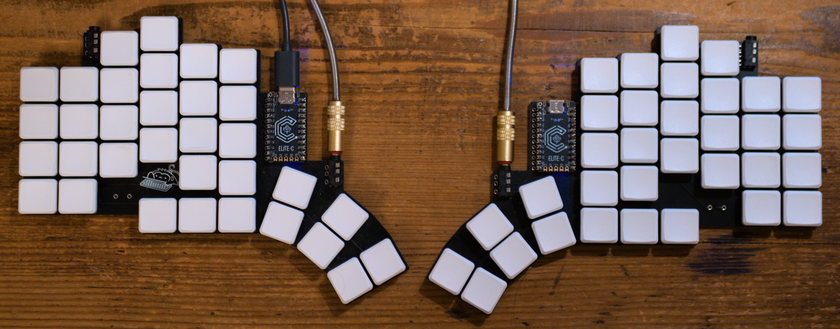ErgoMechKeyboards
Ergonomic, split and other weird keyboards
Rules
Keep it ergo
Posts must be of/about keyboards that have a clear delineation between the left and right halves of the keyboard, column stagger, or both. This includes one-handed (one half doesn't exist, what clearer delineation is that!?)
i.e. no regular non-split¹ row-stagger and no non-split¹ ortholinear²
¹ split meaning a separation of the halves, whether fixed in place or entirely separate, both are fine.
² ortholinear meaning keys layed out in a grid
No Spam
No excessive posting/"shilling" for commercial purposes. Vendors are permitted to promote their products/services but keep it to a minimum and use the [vendor] flair. Posts that appear to be marketing without being transparent about it will be removed.
No Buy/Sell/Trade
This subreddit is not a marketplace, please post on r/mechmarket or other relevant marketplace.
Some useful links
- EMK wiki
- Split keyboard compare tool
- Compare keycap profiles Looking for another set of keycaps - check this site to compare the different keycap profiles https://www.keycaps.info/
- Keymap database A database with all kinds of keymap layouts - some of them fits ergo keyboards - get inspired https://keymapdb.com/
view the rest of the comments

Unless I am mistaken, keyd is a kernel level input remapper (like kmonad and kanata). So it is a lower level component: even if you use keyd, xkb will still be there, downstream. The situation would be roughly the same as with xmodmap... except it won't even be enough!
Indeed, this method consists in mapping scan codes to other scan codes. At this level, there is not the notion that a key produces a character yet. Hence concretely, kernel level input remapping (like QMK, btw) cannot be used to map a key to a character that is not already declared in a higher level component (usually in xkb or xcompose, but it can also be a another component using X11 API, such as xmodmap, for instance).
Edit: to make it more clear, in the end, it is the application who decides what character should be displayed. Typically, for doing so, the application relies on libraries from its toolkit, which implement either X11 or Wayland text input protocols; using standard keycode-to-character translation libraries (i.e., most notably, libxkb). To add new characters in a keymap, these characters need, in the end, to be produceable as the output of these libraries.